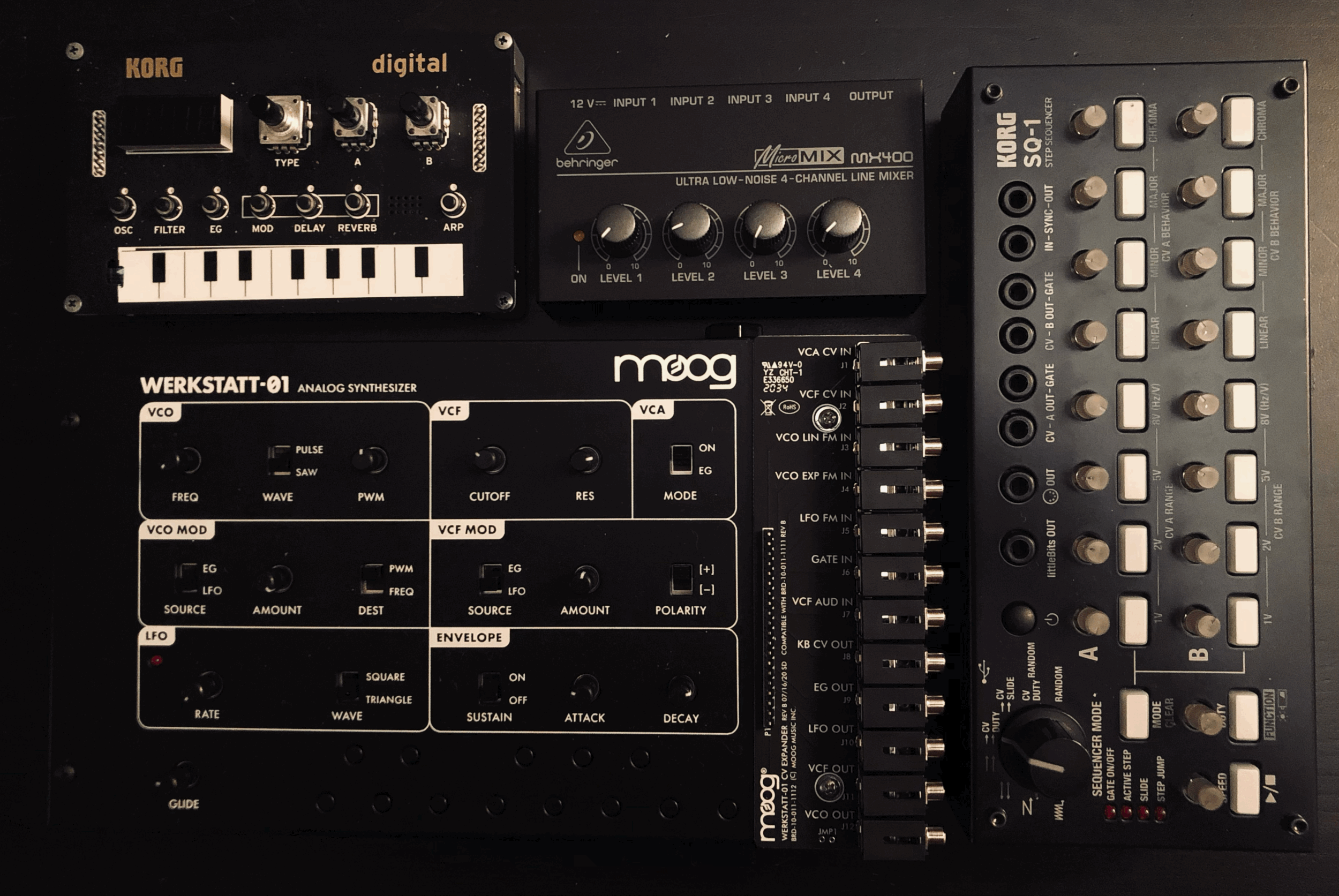Modular Synthesizer Setup
Synthesizers are awesome as shit. They are like legos for math and sound.
There’s no real concept here, or even recommendations for equipment or effects chains. Just mild justification for my favorite setup.
There is a very natural evolution from hardware experimentation to building your own custom shit so I’ll break this into the following parts:
The Laboratory: Audio Hardware and Synthesizers
The Doors of Perception: USB MIDI Interface w/rPi
The Hand of God: Analog Control Voltage
The Laboratory
Audio Hardware and Synthesizers
I’ll begin at the end of the chain with the dopest synth of all.
Clockwise from the left: Korg NTS-1, Behringer MX-400, Korg SQ-1, Moog Werkstatt-01.
Korg NTS-1
A tiny, baby-sized, battery-powered digital synth which supports the logue-SDK for developing one’s own effects.
Moog Werkstatt-01
Beautiful warm sound. Kind of awkward with the patch bay. Affordable as fuck.
SQ-1 Analog Sequencer
Supremely underrated piece of hardware. Sends analog and digital signals using 16-step sequencer.
Behringer MX-400
The simplest mono-input line mixer for integrating more shit into the flow.
The Doors of Perception
USB MIDI Interface with Raspberry Pi
Not strictly necessary, but if you want to get past the impossible fidgety onboard pressure strip keyboard on the NTS-1, then a nice and fairly problem-free addition that allows it to be controlled by any external MIDI device.
Using a Raspberry Pi as a MIDI Host
The Hand of God
Analog Control Voltage with Arduinos
Code documentation in progress (as of Spring 2020), but the basic idea is to use an Adafruit Gemma M0 to generate and modulate between 0 and 5 volts of CV output for any of the 6 analog inputs on the Moog Werkstatt.

